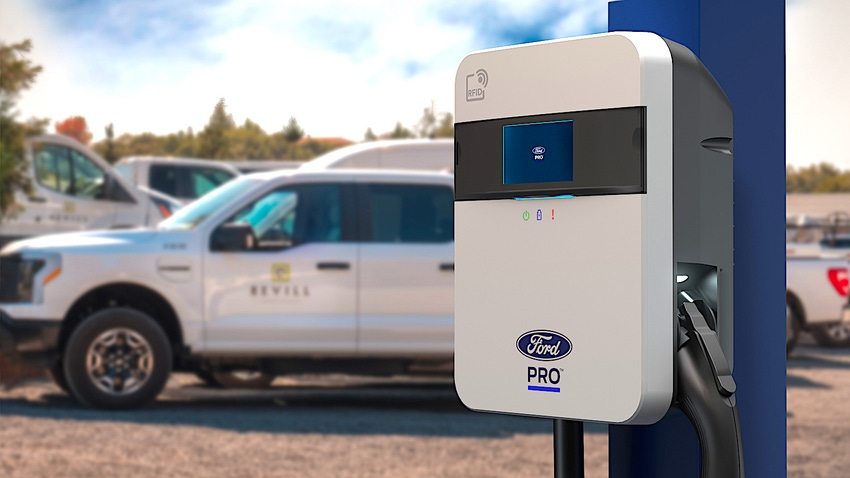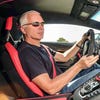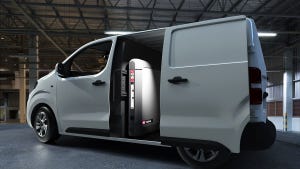Duke Energy Pilots Flat-Rate EV Charging Program
Duke is offering consumers the ability to charge all they want for as little as $20/month.

Drivers are faced with confusion as a result of unfamiliarity with EV charging and the unfortunate internet phenomenon of outright disinformation when trying to understand how much electricity for an EV would cost compared to their current gasoline or diesel costs.
Duke Energy has partnered with BMW, Ford, and General Motors to test a flat-rate energy program that lets EV drivers charge as much as they want during off-peak hours for a monthly charge of either $19.99 or $24.99.
Just as in all-you-can-eat cafeterias, there is a limit. In this case, it is 800 kilowatt-hours, which for a reasonably efficient EV such as the hot-selling Tesla Model 3 that is rated at 4.0 miles per kilowatt-hour, which would equate to 2,400 miles per month or 28,800 miles per year. This compares to the average driver’s distance of about 1,000 miles per month, so even drivers with long commutes can be confident that they won’t top the charging limit. Duke says the typical EV driver averages 15 kWh per day of energy use.
This is important, not because electricity is otherwise prohibitively expensive, but because its affordability is little understood by non-EV drivers, explained BMW energy services manager Adam Langton.
“They're looking at the price of gasoline and they'll look at the price of electricity, which right now are not very comparable,” Langton said. “I pay 30 cents a kilowatt-hour versus $4 a gallon. What does that mean? What are you looking at those situations is ‘How do you compare that?’” he said.
The nationwide average cost of electricity is 23 cents per kilowatt-hour, according to EnergySage.com. But the rate varies dramatically, from a low of 10.35 cents in Idaho to 28.38 cents in California. Duke Energy says that a driver using enough electricity to drive 1,000 miles per month will be paying the equivalent of 8.0 cents per kWh under the flat-rate plan.
Rather than asking drivers to calculate unfamiliar equivalencies, the Duke pilot promises to assure prospective EV buyers that they’ll know exactly what their routing charging will cost.
“Now they can quantify the cost,” said Langton. “I pay I can pay this amount and I can cover all my transportation costs.”
That $20-$25 flat fee compares favorably to a month’s worth of gasoline for commuters, he pointed out. “So you compare that to gas and now you have a really easy comparison, like that's like less than a fill-up at the gas station and that covers my transportation.”
“Credit goes to Duke and the team for being very forward-thinking on trying to create some innovation,” said Dave McCreadie, Ford’s energy services manager for grid services. “As soon as I heard it, I latched onto it thinking ‘This could be really cool’.”
That’s because it can neutralize drivers’ fear of the unknown. “There are a lot of cost calculators on the web,” said McCreadie. “Ford has one ourselves.” But that just isn’t enough for drivers who don’t understand what they are calculating.
“We’ve all been driving gasoline vehicles our whole lives. Nobody knows what a kilowatt-hour is or what it costs, how many miles a kilowatt hour will get you,” he said. “We’ve got natural associations with how far a gallon of gas will take you, but hard for people to walk through the math [of EV equivalents].”
Another attractive aspect of electric power for passenger vehicles is the stability of electric prices in comparison to the constant boom-and-bust see-sawing of gasoline prices, McCreadie noted. “The cost of gas is very volatile but the cost of electricity over time has been very stable.”
Duke will monitor customers’ charging through the mobile apps provided by the participating automakers that employ the Open Vehicle Grid Integration Platform (OVGIP). OVGIP enables management of EV charging from multiple automakers in a grid-friendly and EV driver-centric manner, Duke explained.
Drivers set their desired state of charge and preferred departure time in the app. Duke Energy will use the OVGIP data to measure customer charging data directly from the enrolled vehicles, eliminating the need to install a second electric meter at their houses.
During the pilot, charging restrictions are not a block of daily hours, but instead are defined as “demand response events,” during times of high load on the grid. Duke can declare as many as three such events per month, during which time charging is not included under the plan. The power company will provide a minimum of 12 hours’ notice, so drivers can ensure their cars are already topped off. Additionally, participants get four free passes during the time of the pilot when they can opt out of the demand response event restriction.
“EV charging has the added benefit of flexibility, meaning charging can be managed – such as shifting charging to off-peak hours – which is important in limiting cost increases and mitigating peak demands,” said Harry Sideris, executive vice president of customer experience at Duke Energy. “Duke Energy has been strategically planning and enabling the grid for a future with many more EVs on the road – and is also making data-driven investments to improve reliability, strengthen the grid, expand technologies, and provide customers with the intelligent information they need to make smart energy choices and save money."
About the Author(s)
You May Also Like





